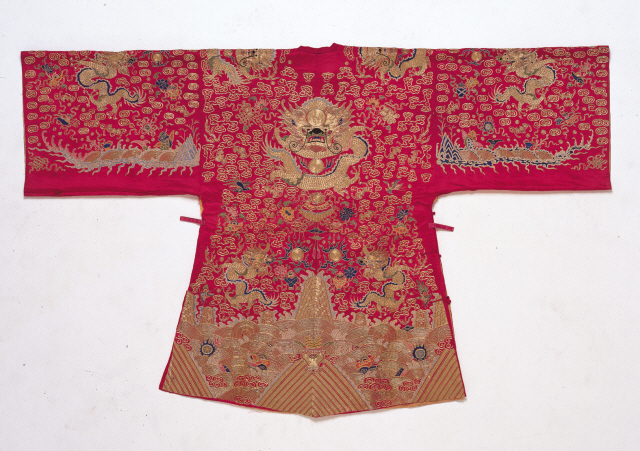National Museum showcases 100 Chinese artifacts wishing good fortune
Count the five Chinese blessings: Happiness, longevity, wealth, joy and professional success.
The people’s yearnings for these blessings and fortune were often expressed in works of art, from paintings to sculptures, and even in wedding robes. In these items, auspicious spirits would appear in the form of a dragon or a phoenix, and sometimes a bat.
The National Museum of Korea is holding a special exhibition featuring some 100 Chinese artifacts used to wish good fortune. The pieces have been selected from collections from different museums and private individuals.
Count the five Chinese blessings: Happiness, longevity, wealth, joy and professional success.
The people’s yearnings for these blessings and fortune were often expressed in works of art, from paintings to sculptures, and even in wedding robes. In these items, auspicious spirits would appear in the form of a dragon or a phoenix, and sometimes a bat.
The National Museum of Korea is holding a special exhibition featuring some 100 Chinese artifacts used to wish good fortune. The pieces have been selected from collections from different museums and private individuals.

“Mankind in different cultural regions has maintained since ancient times a tradition of using symbols to express their wishes for auspicious states,” the museum said in a catalogue accompanying the exhibition. “Chinese people were no exception. They have a longer and more colorful history of using auspicious symbols in almost all aspects of life including arts and culture.”
Titled “Best Wishes, Auspicious Symbols in Chinese Art,” the exhibition begins by introducing the origins of China’s auspicious symbols.
Featured items include handicrafts decorated with images of Daoist immortals and auspicious animals, with messages such as “Wealth and Honor,” “Living Ten Thousand Years” and “Prosperity of Descendants” which well reflect the wishes of the ancient Chinese people, who yearned for longevity and happiness. Happiness and longevity continue to be two of the foremost wishes of the Chinese people today, according to the museum.
The second part of the exhibition features artifacts that contain the patterns of dragons and phoenixes ― symbols of good fortune and authority. In China, it has been believed that the appearance of the animals indicate an auspicious blessing. The animals also symbolized the authority of a ruler who brings a reign of peace and prosperity. The symbols of dragon and phoenix were used in both the royal court and among the households of common people.

Items exhibited in this section include a wedding robe from Qing Dynasty China (1644-1912), which is lavishly decorated with a dragon pattern. The garment is in red, a color which the Chinese believe chases away evil and brings in happiness, with the dragons embroidered in gold thread. The dragon is in harmony with nature and with its surroundings, including mountains, clouds and a flowing river.
The same section has on display ceramics and plates that are decorated with patterns of phoenixes along with other birds. In old China, the phoenix was regarded as the king of birds, and symbolized the absolute ruler who would bring peace and happiness to his people.
The third part of the exhibition focuses on the five Chinese blessings: happiness, longevity, wealth, joy and professional success. Among many animals, bats were regarded as the symbol of blessings, as the second character in the word “bianfu,” the Chinese word for bat, sounds the same as the Chinese word for happiness. Among the artifacts in this section of the exhibition is a Qing Dynasty plate decorated with five bats, each symbolizing the five different blessings, surrounded by fruit, blossoming flowers and birds.
“The Chinese tradition of using auspicious symbols as a means of expressing people’s wishes through arts and crafts exerted an influence upon Korea and Japan, where the tradition continued to develop in (those countries’) own ways,” the museum said.
“Best Wishes, Auspicious Symbols in Chinese Art” has been organized in celebration of the 20th anniversary of Korea-China diplomatic relations.
The exhibition runs until Sept. 23 at the museum’s Chinese Art Gallery. For more information, call (02) 2077-9558.
By Claire Lee (dyc@heraldcorp.com)


















